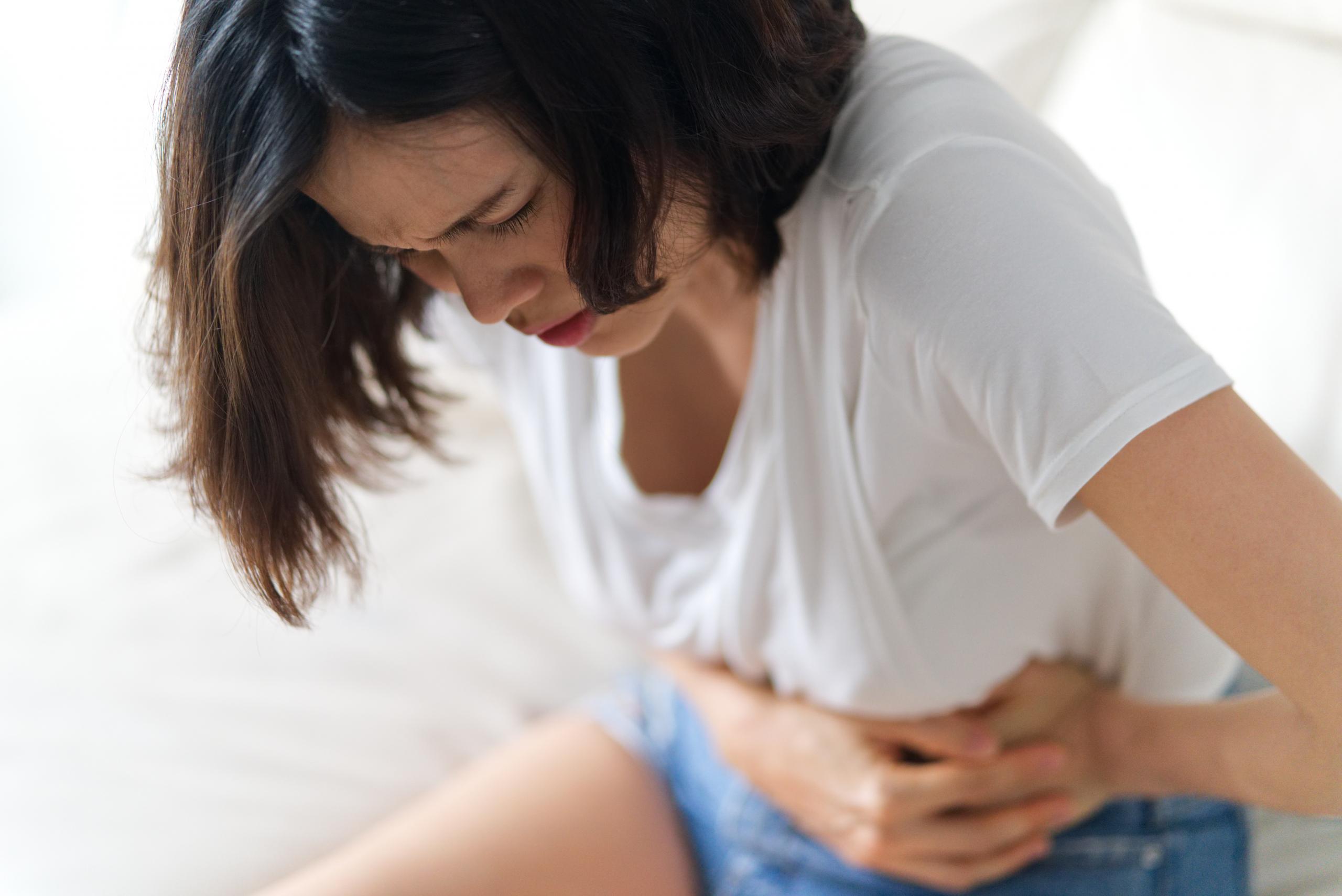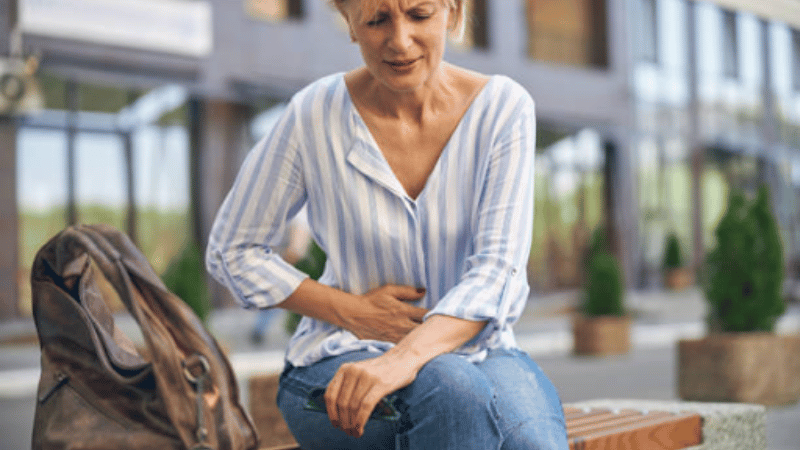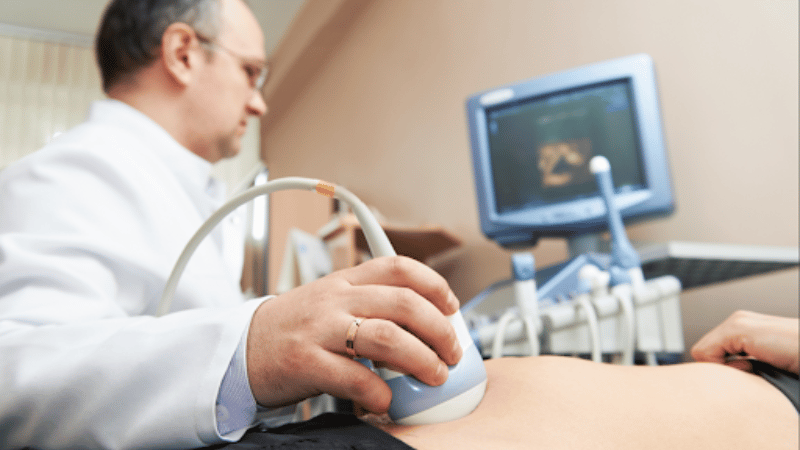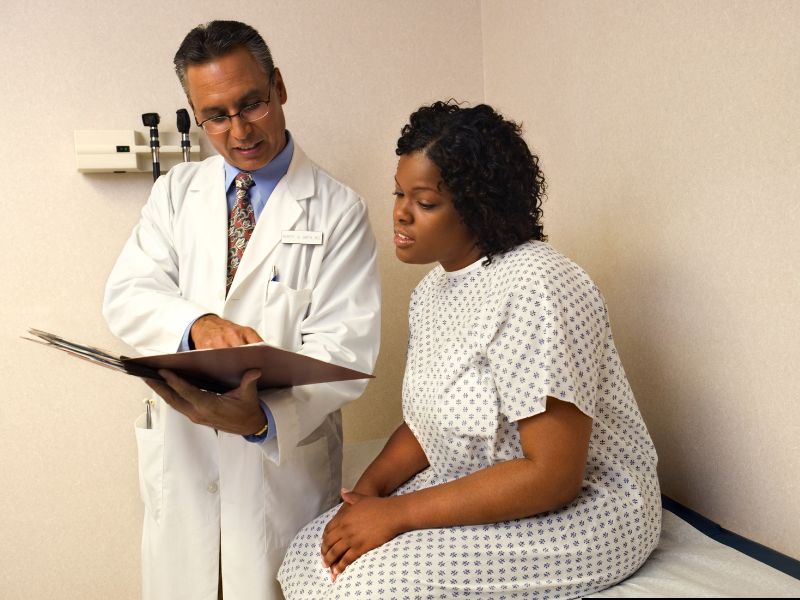
If you’ve found yourself experiencing abnormal periods, pelvic pain, or other unexplained symptoms, you may have wondered, “Do I have uterine fibroids?” or “Can I self-diagnose fibroids?”
Fibroids are a surprisingly common reproductive health issue, and if someone in your family had fibroids, you may wonder if you also have the condition.
Recognizing fibroids early allows for timely diagnosis and treatment, such as uterine fibroid embolization (UFE), which can help prevent more severe health issues, such as fertility problems or chronic pain.
The best way to find relief from this condition is through a proper diagnosis and treatment by a fibroid specialist.
What Are Uterine Fibroids?
Uterine fibroids, or leiomyomas, are non-cancerous growths in or around the uterus. Fibroids can cause pain, discomfort, and other complications that impact daily life.
If you want to know how to tell if you have fibroids, you can learn more about fibroid symptoms:
- Heavy and prolonged menstruation between or during your periods
- Anemia, which can lead to fatigue
- Pain during intercourse
- Frequent urination
- Constipation and/or bloating
- Pain in your pelvis or lower back
- Increased menstrual cramping
- Stomach swelling
Do I Have Uterine Fibroids?

Detecting uterine fibroids can be challenging, especially when symptoms are mild or go unnoticed. However, fibroid symptoms can result in certain behavior patterns that could be a clue towards the cause:
- Staying close to home because of frequent urination and digestive issues.
- Missing work, canceling social engagements and avoiding intimacy.
Uterine fibroids can also impact your mental health. Visible symptoms like stomach swelling or bleeding through clothing can lead to embarrassing situations and self-esteem issues. When combined, these symptoms may add up to feelings of sadness and depression.
If this sounds all too familiar, you may have uterine fibroids. Some fibroid symptoms overlap with those of other reproductive tract conditions, so receiving an accurate medical diagnosis is essential.
To ensure your health and well-being, seeking a professional diagnosis and treatment plan for your symptoms is recommended, as they could indicate a more serious condition.
How Do You Get Fibroids?
Many patients wonder how and why they developed fibroids in the first place. Although this is not entirely understood, researchers believe genetics, hormones, lifestyle influences, and other factors are involved.
Some factors that increase your risk of developing fibroids include if you are a woman of childbearing age or if you have a close family member with fibroids. Women who began menstruation at an early age are also more likely to be affected. Additionally, women of African-American descent are disproportionately impacted by both fibroid development and symptom severity.¹
Lifestyle factors that can possibly influence fibroid growth include:
- Frequently eating red meat
- Not eating enough fruits and vegetables
- Drinking too much alcohol or caffeine
- Not drinking enough water
It’s important to note that while these lifestyle factors may influence fibroid growth, they are not the sole causes. Other factors, such as genetics and hormonal imbalances, also play a significant role.
Underlying Health Conditions
Underlying health conditions like obesity, high blood pressure, and vitamin D deficiency may also contribute. Research has shown that hormones play a significant role in the growth and development of fibroids.
Certain hormonal imbalances, such as those associated with pregnancy or some types of hormonal birth control, may contribute to fibroid growth. Estrogen and progesterone, for example, are known to stimulate the growth of fibroids. However, studies have also indicated that Insulin-like Growth Factor ( IGF-1), a growth factor produced by the liver, may also contribute to fibroid development.
Fibroids Similar to Other Health Conditions
While uterine fibroids are a common cause of reproductive health issues, it’s crucial to remember that other conditions, like ovarian cysts, polycystic ovary syndrome (PCOS), and menorrhagia, can mimic their symptoms. If you’re experiencing symptoms like pelvic pain, irregular periods, or heavy bleeding, consult a healthcare provider for a proper diagnosis and treatment.
How to Know if You Have Uterine Fibroids
Even though you may want to know how to check for fibroids at home or self-diagnose for fibroids, a doctor’s visit is the best way to get an accurate diagnosis. Still, it is possible to externally feel a misshapen or swollen uterus caused by a fibroid belly bulge.
When identifying whether you have uterine fibroids, medical imaging, such as an ultrasound or MRI, should be performed. These imaging techniques can diagnose fibroids while providing accurate information on fibroid size, location, and the number of growths.
Ultrasound

An ultrasound is usually the first imaging test done if fibroids are suspected. An ultrasound uses sound waves to create a picture of the uterus and confirm fibroids’ presence while measuring their size and finding their location. The doctor moves the device over your abdomen to get images of the uterus.
A transvaginal ultrasound provides a more detailed visual of your organs and the soft tissue inside your pelvic cavity than an abdominal ultrasound.
Magnetic Resonance Imaging (MRI)
Sometimes, an MRI is done, which provides more detail than an ultrasound. An MRI is often recommended for women with enlarged uteruses or those approaching menopause because it can provide detailed images of the uterus and surrounding structures. An MRI clearly shows the number of fibroids’ size and location, which helps determine a treatment plan.
Hysterosonography
A hysterosonography, or saline infusion sonogram, is another method of diagnosis. Sterile salt water expands the uterus to get images of submucosal fibroids and the uterine lining. This procedure is often used for women who experience heavy bleeding or if they are trying to become pregnant.
Hysterosalpingography
A hysterosalpingography is a procedure using dye to highlight the uterus and fallopian tubes on an X-ray. The doctor will be able to see if fibroids are blocking the fallopian tubes, a situation that can cause fertility issues. A hysterosalpingography can also show submucosal fibroids growing in the uterine wall muscles.
MORE QUESTIONS? CONTACT US TODAY
The Best Method of Identifying and Treating Uterine Fibroids

If you notice signs and symptoms of uterine fibroids, like heavy periods and severe cramps that impact your daily activities, you should know how to check for uterine fibroids and who to visit for help.
If you believe you may have fibroids, seeing a fibroid specialist is recommended to explore your entire range of treatment options, from invasive to non-invasive procedures. Some common fibroid treatment options include:
Although many think a hysterectomy is the only solution, that isn’t true. Uterine Fibroid Embolization (UFE) is a non-surgical option that can alleviate fibroid pain and discomfort.
Treat Fibroids with Uterine Fibroid Embolization
At USA Fibroid Centers, we specialize in performing a minimally invasive outpatient treatment called Uterine Fibroid Embolization (UFE). UFE can resolve your symptoms, leave your uterus intact, and quickly return you to normal daily activities. It does not require a hospital stay, and most women fully recover within one to two weeks.
When you are ready to take your first step toward recovery, we encourage you to schedule an initial consultation with one of our highly skilled experts at one of our 60 fibroid centers near you. We look forward to helping you take control of your health!
Sources
- “High cumulative incidence of uterine leiomyoma in black and white women: Ultrasound evidence,” American Journal of Obstetrics & Gynecology,



